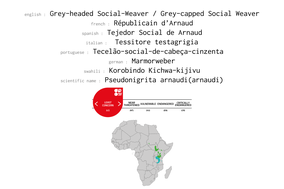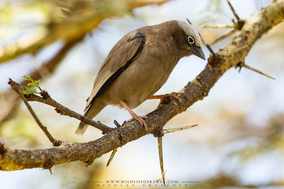- Homepage
- Bestiary
- Carnivores
- Pachydermata
- Birds of prey
- Bateleur
- Buzzard, Augur
- Buzzard, Common
- Eagle, African Crowned
- Eagle, African Fish
- Eagle, Black-chested Snake
- Eagle, Brown Snake
- Eagle, Long-crested
- Eagle, Martial
- Eagle, Steppe
- Eagle, Tawny
- Eagle, Wahlberg's
- Falcon, Amur
- Falcon, Lanner
- Falcon, Pygmy
- Goshawk, African
- Goshawk, Dark Chanting
- Goshawk, Eastern Chanting
- Goshawk, Gabar
- Harrier, African Marsh
- Harrier, Eurasian Marsh
- Harrier, Montagu's
- Harrier, Pallid
- Hawk, African Harrier
- Hobby, eurasian
- Kestrel, Common
- Kestrel, Grey
- Kestrel, Greater
- Kestrel, Lesser
- Kite, Yellow-billed
- Kite, Black-winged
- Eagle-owl, Verreaux's
- Owl, african scops
- Owl, Marsh
- Secretary Bird
- Sparrowhawk
- Vulture, Egyptian
- Vulture, Hooded
- Vulture, Lappet-faced
- Vulture, Palm-nut
- Vulture, Rüppell's
- Vulture, White-backed
- Vulture, White-headed
- Ongulates
- Antelope, sable
- Bongo
- Buffalo
- Bushbuck
- Bushpig
- Dik-dik, Kirk's
- Dik-dik, Günther's
- Duiker, common
- Duiker, Harvey's
- Eland
- Gazelle, Grant
- Gazelle, Thomson
- Gerenuk
- Giraffe, masai
- Giraffe, reticulated
- Giraffe, Rotschild's
- Hartebeest
- Hog, giant forest
- Impala
- Klipspringer
- Kudu, greater
- Kudu, lesser
- Oribi
- Oryx, east african
- Oryx, fringe-eared
- Reedbuck, Bohor
- Reedbuck, mountain
- Steenbok
- Suni
- Topi
- Warthog
- Waterbuck, common
- Waterbuck, defassa
- Wildebeest
- Zebra, Grevy
- Zebra, hybrid
- Zebra, plain
- Reptiles
- Waders and water birds
- Avocet pied
- Bittern, dwarf
- Coot
- Cormorant, long-tailed
- Cormorant, white-breasted
- Courser, Bronze-winged
- Courser, somali
- Courser, Temminck's
- Courser, three-banded
- Courser, Two Banded
- Crake black
- Crane, grey crowned
- Darter, african
- Duck, african black
- Duck, knob-billed
- Duck, white-backed
- Duck, white-faced whistling
- Duck, yellow-billed
- Egret, cattle
- Egret, great
- Egret, intermediate
- Egret, little
- Flamingo, greater
- Flamingo, lesser
- Goose, egyptian
- Goose, spur-winged
- Grebe, little
- Greenshank, common
- Gull, grey-headed
- Gull, sooty
- Hamerkop
- Heron, black
- Heron, black-headed
- Heron, goliath
- Heron, grey
- Heron, purple
- Heron, rufous-bellied
- Heron, squacco
- Heron, striated
- Night-heron, black-crowned
- Ibis, african sacred
- Ibis, glossy
- Ibis, hadada
- Jacana, African
- Lapwing, Senegal
- Moorhen, common
- Painted-snipe, greater
- Pelican, great white
- Pelican, pink-backed
- Plover, blacksmith
- Plover, black-winged
- Plover, caspian
- Plover, crowned
- Plover, kittlitz's
- Plover, long-toed
- Plover, ringed
- Plover, spur-winged
- Plover, three-banded
- Plover, wattled
- Pratincole, collared
- Ruff
- Sandpiper, common
- Sandpiper, green
- Sandpiper, marsh
- Sandpiper, wood
- Sandplover, greater
- Snipe, common
- Spoonbill
- Stilt
- Stint, little
- Stork, abdim's
- Stork, african openbill
- Stork, black
- Stork, marabou
- Stork, saddle-billed
- Stork, white
- Stork, woolly-necked
- Stork, yellow-billed
- Teal, common
- Teal, Hottentot
- Teal, red-billed
- Teal cape
- Tern, white-winged
- Tern, whiskered
- Thick-knee, spotted
- Thick-knee, water
- Terrestrial birds
- Bustard, black-bellied
- Bustard, buff-crested
- Bustard, Hartlaub's
- Bustard, kori
- Bustard, white-bellied
- Francoli, coqui
- Francolin, crested
- Francolin, Hildebrandt's
- Francolin, Jackson's
- Francolin, red-winged
- Francolin, Shelley's
- Guineafowl, helmeted
- Guineafow, vulturine
- Hornbill, southern ground
- Ostrich, masai
- Ostrich, somali
- Sandgrouse, black-faced
- Sandgrouse, chesnut-bellied
- Sandgrouse, yellow-throated
- Spurfowl, red-necked
- Spurfowl, yellow-necked
- Birds
- Apalis, yellow-breasted
- Babbler, arrow-marked
- Babbler, brown
- Babbler, northern pied
- Barbet, d'Arnaud's
- Barbet, red-and-yellow
- Barbet, red-fronted
- Batis chin-spot
- Bee-eater, blue-cheeked
- Bee-eater, little
- Bee-eater, cinnamon-chested
- Bee-eater, eurasian
- Bee-eater, olive
- Bee-eater, somali
- Bee-eater, white-throated
- Bee-eater, white-fronted
- Bishop, yellow
- Bishop, Zanzibar red
- Bishop, yellow-crowned
- Boubou, tropical
- Boubou, slate-coloured
- Bulbul
- Bush-shrike, sulphur-breasted
- Bunting, cinnamon-breasted rock
- Bush-shrike, rosy-patched
- Camaroptera, grey-backed
- Canary, brimstone
- Canary, yellow-crowned
- Chat, alpine
- Chat, anteater
- Chat, cliff
- Chat, sooty
- Chatterer
- Cisticola, Aberdare
- Cisticola, desert
- Cisticola, Hunter's
- Cisticola Lyne's
- Cisticola, rattling
- Cisticola, stout
- Cisticola, winding
- Citril, african
- Cordon-bleu
- Coucal, white-browed
- Coucal, black
- Crow, house
- Crow, pied
- Cuckoo, african
- Cuckoo, african emerald
- Cuckoo, common
- Cuckoo, Diederik
- Cuckoo, great spotted
- Cuckoo, red-chested
- Dove, african mourning
- Dove, dusky turtle
- Dove, emerald-spotted wood
- Dove, namaqua
- Dove, laughing
- Dove, red-eyed
- Dove, ring-necked
- Drongo, fork-tailed
- Firefinch
- Fiscal, northern
- Fiscal, grey-backed
- Fiscal, long-tailed
- Fiscal, Taita
- Flycatcher, african dusky
- Flycatcher, african grey
- Flycatcher, african paradise
- Flycatcher, spotted
- Flycatcher, southern black
- Flycatcher, white-eyed slaty
- Go-away-bird
- Grenadier, purple
- Hoopoe
- Hoopoe, green wood
- Hornbill, african grey
- Hornbill, Jackson's
- Hornbill, Von Der Decken's
- Hornbill, red-billed
- Hornbill, eastern yellow-billed
- Hornbill, sylvery-cheeked
- Hornbill, crowned
- Indigobird, village
- Kingfisher, grey-headed
- Kingfisher, giant
- Kingfisher, malachite
- Kingfisher, pied
- Kingfisher, striped
- Kingfisher, woodland
- Lark, pink-breasted
- Lark, red-capped
- Lark, rufous-naped
- Longclaw, pangani
- Longclaw, rosy-breasted
- Longclaw, yellow-throated
- Lovebird
- Mannikin, bronze
- Mannikin, rufous-backed
- Mousebird, blue-naped
- Mousebird, speckled
- Mousebird, white-headed
- Oriole, black-headed
- Oriole, african golden
- Oxpecker, yellow-billed
- Oxpecker, red-billed
- Parrot, brown
- Parrot, red-bellied
- Pigeon, african green
- Pigeon, speckled
- Pipit, grassland
- Pipit, plain-backed
- Pipit, golden
- Quail-finch
- Quelea red-billed
- Raven, white-necked
- Raven, fan-tailed
- Robin-chat, Cape
- Robin-chat, white-browed
- Roller, eurasian
- Roller, lilac-breasted
- Roller, purple
- Rook, Cape
- Scimitarbill
- Scimitarbill, Abyssinian
- Scrub Robin, white-browed
- Seedeater, streaky
- Seedeater, yellow-rumped
- Shrike, lesser grey
- Shrike, red-backed
- Shrike, northern white-crowned
- Shrike, Isabelline
- Silverbird
- Sparrow, chesnut
- Sparrow, grey-headed
- Sparrow, rufous
- Sparrow, yellow-spotted bush
- Sparrow-Lark Fischer's
- Sparrow-weaver, Donaldson-Smith's
- Sparrow weaver, white-browded
- Starling, black-bellied
- Starling, bristle-crowned
- Starling, Fischer's
- Starling, Golden-breasted
- Starling, greater blue-eared
- Starling Hildebrandt's
- Starling, red-winged
- Starling, Rüppell's
- Starling, slender-billed
- Starling, superb
- Starling, violet-backed
- Starling, wattled
- Sunbird, amethyst
- Sunbird, beautiful
- Sunbird, bronze
- Sunbird, eastern double-collared
- Sunbird, golden-winged
- Sunbird, Hunter's
- Sunbird, malachite
- Sunbird, mariqua
- Sunbird, eastern violet-backed
- Sunbird, purple-banded
- Sunbird, scarlet-chested
- Sunbird, scarlet-tufted malachite
- Sunbird, tacazze
- Sunbird, variable
- Swallow, barn
- Swallow, red-rumped
- Swallow, lesser striped
- Swallow, wire-tailed
- Tchagra, black-crowned
- Tchagra, brown-crowned
- Thrush, abyssinian
- Thrush, common rock
- Thrush, spotted morning
- Tit, red-throated
- Tit, white-bellied
- Wagtail, african pied
- Wagtail, western yellow
- Warbler, grey-capped
- Warbler, moustached grass
- Warbler, willow
- Waxbill, common
- Weaver, african golden
- Weaver, Baglafecht
- Weaver, black-capped social
- Weaver, chesnut
- Weaver, grey-capped social
- Weaver, grosbeak
- Weaver, Holub's golden
- Weaver, northern masked
- Weaver, parasitic
- Weaver, red-billed
- Weaver, red-headed
- Weaver, spectacled
- Weaver, speckle-fronted
- Weaver, Speke's
- Weaver, Taveta golden
- Weaver, village
- Weaver, vitelline masked
- Weaver, white-headed buffalo
- Wheatear, abyssinian black
- Wheatear, capped
- Wheatear, isabelline
- Wheatear, northern
- Whinchat
- Whydah, paradise
- Whydah, pin-tailed
- Widowbird, Jackson's
- Widowbird, red-cowled
- Widowbird, white-winged
- Widowbird, yellow-mantled
- Woodpecker, grey
- Wodpecker, nubian
- Wren-Warbler , Grey
- Primates, Rodents and Others
- Baboon, olive
- Baboon, yellow
- Colobus, angolan
- Colobus, guereza
- Galago, greater
- Hare
- Hyrax, rock
- Hyrax, bush
- Mongoose, banded
- Mongoose, dwarf
- Mongoose, slender
- Mongoose, white-tailed
- Mole rat, naked
- Monkey, blue
- Monkey, patas
- Monkey, vervet
- Porcupine
- Rat, afroalpine vlei
- Squirrel, unstripped ground
- Squirrel, ochre bush
- Squirrel, red bush
- Chiromantis petersii
- B&W Gallery
- Buy prints
- Contact
Carnivores Pachydermata Ongulates Reptiles Primates, rodents and others Birds Birds of prey Terrestrial birds Waders and water birds
Grey-capped Social Weaver
French naturalist Charles Lucien Bonaparte described the grey-capped social weaver as Nigrita arnaudi in 1850. The species is named in honor of Joseph-Pons d'Arnaud, the French explorer who collected a specimen around 1841 near Juba on the White Nile, and sent it to the French Museum of Natural History.
The grey-capped social weaver is monogamous and breeds in colonies. The birds make long series of seven to ten high-pitched piercing squeeks, sounding like tseeer-tseeer-tseeer-.... The grey-capped social weaver feeds on both grass seeds and insects, such as grasshoppers, beetles, termites and caterpillars. Feeding mostly takes place in groups at some distance from the colony.
In P. arnaudi, nests are not only used for breeding and to protect the chicks, but also for fully grown birds to sleep at night. The species builds roofed nest in thorny Acacia trees and forms colonies. One of the two entrances is closed however just before eggs are laid and opened again around the moment of fledging. Male and female share incubation duties. Adult and adolescent birds from previous broods often help in nest building and feeding the chicks. The nestlings are initially fed on a diet consisting exclusively of insects, and grass seeds are only given during the last days. Fledging occurs after about twenty days.
Chestnut sparrows (Passer eminibey) sometimes drive grey-capped social weavers from their nests to take them over. Cut-throat finches (Amadina fasciata) however only use deserted nests.
Source : wikipedia













